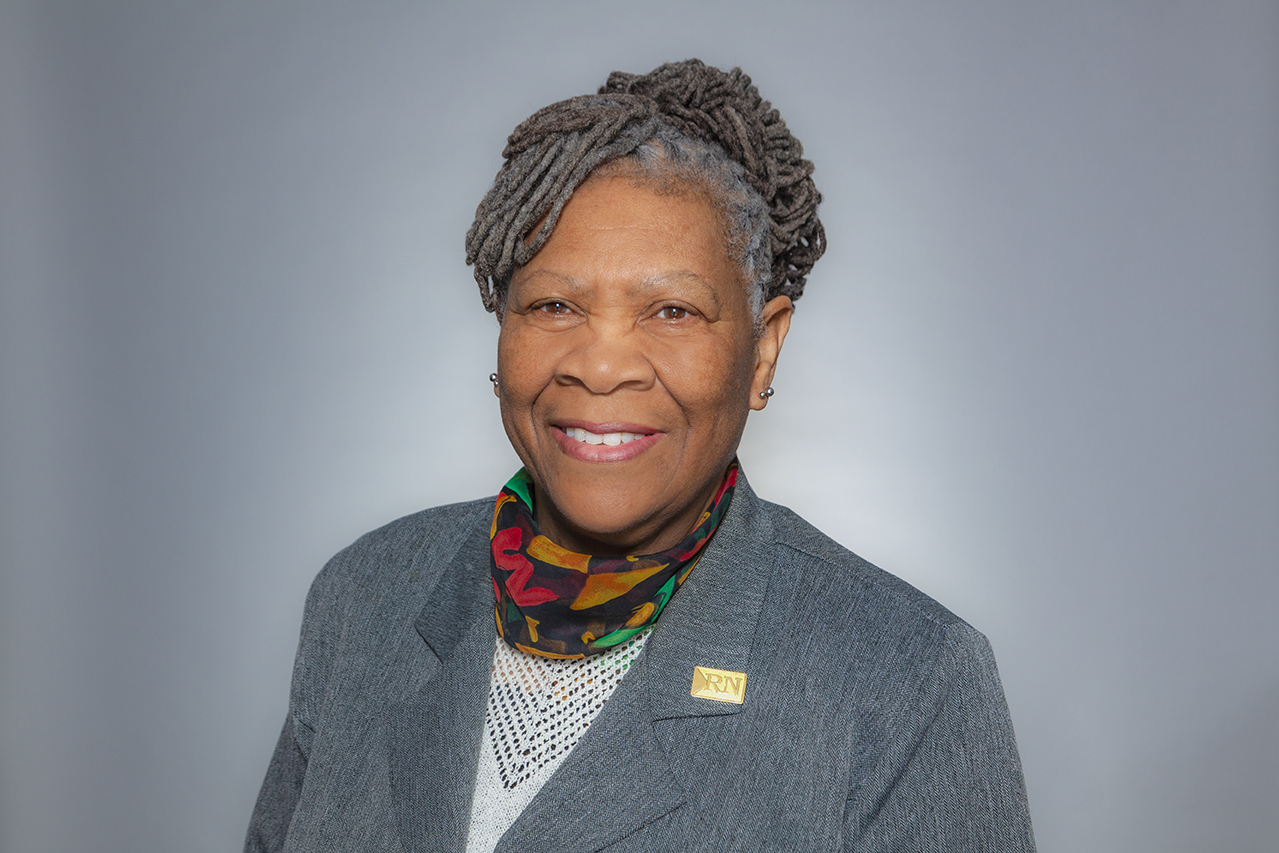As I write this, I think back to the words of past-president Dr. Angela Cooper Brathwaite, who once wrote about the concept of “service” and “servant leadership.” She envisioned her role as serving and meeting the needs of members. Reflecting on the past few months, I want to share my thoughts about how my approach as president is similar. The desire to serve and ensure inclusion by bringing my voice as an experienced leader who is Black and capable of serving diverse members – this is what drove me to want to become president. I am thankful for the opportunities I have to spend time with members, attend meetings, listen, learn and share my knowledge and perspective.
I am more than a year into the presidency and my pride for the work of RNAO and its members to raise the issues that need raising has never been higher. That was certainly evident during October’s ninth annual Fall Tour, when president-elect NP Lhamo Dolkar, our CEO Dr. Doris Grinspun and myself met members across Ontario.
I had the pleasure of visiting with members in Thunder Bay, Kawartha-Victoria and Mississauga. Wherever I went, I was struck by the sense of gratitude expressed by members and health organization staff. They genuinely appreciated being able to connect with RNAO leaders. There was a palpable excitement that RNAO was in the room and that we are an organization that pays attention to our members.
The focus of our tour was twofold: to spotlight how a strong and vibrant nursing workforce is necessary for a well-functioning health system; and to encourage and support our members to keep advocating for the benefit of a healthier population.
While meeting with Amanda Mayock and the Kawartha-Victoria chapter executive, I visited the Northumberland Hills Hospital emergency department in eastern Ontario. The large number of people waiting was a reminder that this community, like so many others, would benefit from more robust primary care at NP-led clinics that would ease the burden on ERs. Many of the patients that day likely had nowhere else they could receive care. During that same visit, a planned trip to a long-term care home had to be cancelled due to an outbreak – a reminder that COVID continues to threaten the most vulnerable.
By joining or renewing, you help bring issues of nursing, health and health-care delivery to the forefront.
In Thunder Bay, where I met with Sarah Lynne Myllyaho and members of the Lakehead chapter, I toured Thunder Bay Regional Health Sciences Centre. The centre’s President & CEO, former RNAO board member Dr. Rhonda Crocker-Ellacott, is an example of our strength. One highlight: visiting the hospital’s prayer room, which is a sweat lodge. I was given a sacred gift of tobacco and felt honoured to receive it. Our Indigenous colleagues led us in starting the visit “in a good way.”
I listened intently to a member who had reservations about RN prescribing. I shared with her the core messages of our Nursing Career Pathways report: remove barriers that hinder RNs, seize opportunities to make the profession more attractive, and strive for a better-functioning health system. RN prescribing is crucial to achieve these goals. I assured the member that RNs will receive the direction needed to prescribe safely and effectively. RNAO’s 12 years of advocacy on this has paid off; the legislation opens the door to more timely care, starting this January.
The visits in Kawartha-Victoria and Thunder Bay attracted quite a bit of media attention. I am so proud to be part of an organization that honours journalists for working with us to inform the public about health topics that concern nurses and all Ontarians. Interview opportunities with media raise my excitement and passion to speak about how RNAO advocates, supported by resources from home office on emerging issues.
My final stop with the Mississauga chapter and RNAO’s Staff Nurses Interest Group (SNIG) felt like a meeting of old friends. People who have served on the board with me, including Paula Manuel and Una Ferguson, joined me via Zoom to share the infectious enthusiasm of other members.
We discussed the importance of mentoring and SNIG’s role in this essential work. Regardless of individual expertise, we all need encouragement and opportunities to build on each other’s strengths, learn together about our roles in RNAO’s chapters and regions, and prepare for changing times with data and strategies from RNAO to inform our continued advocacy.
Back to the topic of service, I had the chance in November to meet nursing students participating in a board placement. I can tell you they are energized. And after three days of meetings with board members and our assembly of leaders, they are keen to spread the word. In the words of student Aveen Abdoli: “I joined RNAO because I want to learn what nursing is all about and to be part of big things.”
One student, who hopes to serve on our board in the future, said the board student representative role allows students to dream and to see they can have an impact. When we take the time to mentor and coach nursing students, we are investing in their future and our own as an influential association.
I end this column with a shout out to the 51,650+ members who have placed their trust in RNAO. By joining or renewing, you help bring issues of nursing, health and health-care delivery to the forefront. As nurses, we know that health begins with the social and environmental determinants of health. This is our foundation and an important focus. Equally important is our work in equity, diversity and inclusion. We are dedicated to ensuring members who may look and sound different, and who hail from various communities and health sectors, are heard and have a rightful place.
Thank you for your trust and for your commitment to make our profession stronger and our society a better place to live.

